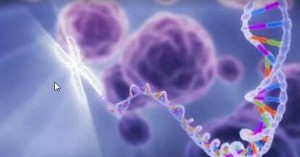-

Team Develops Editing Toolkit for Customizing Zebrafish Genomes
ROCHESTER, Minn. — September 20, 2012. Mayo Clinic researchers and an international team of scientists have developed a highly-efficient means of editing zebrafish genomes for research purposes, eliminating a bottleneck that has stymied biomedical scientists from using the fish as a model for human disease. The details appear online today in the journal Nature.

For many researchers, zebrafish are becoming the model of choice for genetic studies. However, the inability to efficiently target genetic modifications has delayed their use by some. The Mayo team used an improved variant of artificial transcription activator-like effector nucleases, or TALENs, to provide a new approach.
"By using genetic engineering tools called TALENs and synthetic DNA to make defined changes in the genomes of our fish, we are able to make small changes (just a few nucleotides) as well as add a specific sequence for biological gene switch applications," says Stephen Ekker, Ph.D., senior author and head of Mayo's zebrafish core facility. "This is the first time we've been able to make custom changes to the zebrafish genome."
Dr. Ekker says this toolkit opens the door to a range of new experiments in zebrafish, including modeling of human disease by introducing small point mutations, designing regulated gene alleles, and developing classical structure/function experiments using an animal model system.
This new approach has implications for other model systems, including mice, rats, flies and worms, and possible applications in stem cell research.
"To our knowledge, this TALEN toolkit also is the most active described to date," says Dr. Ekker. "This has important implications for the growing TALEN field, whether used in fish or any other cells. We used this higher activity for genome editing applications. We also used it to conduct a series of somatic gene function assessments, opening the door to an array of non-germline experiments in zebrafish."
Other authors include Victoria Bedell, Jarryd Campbell, Tanya Poshusta, Randall Krug, Sumedha Penheiter, Ph.D., Alvin Ma, Ph.D., and Karl Clark, Ph.D., all of Mayo Clinic; Ying Wang, Ph.D., and Jeffrey Essner, Ph.D., of Iowa State University; Colby Starker, Ph.D., Wenfang Tan, Ph.D., Scott Fahrenkrug, Ph.D., Daniel Carlson, Ph.D., and Daniel Voytas, Ph.D., all of the University of Minnesota; and Anskar Y. H. Leung, M.D., Ph.D., of Queen Mary Hospital, Hong Kong.
Support for the research came from the State of Minnesota, the National Institutes of Health, the National Science Foundation, the Research Grant Council of the University of Hong Kong and the Tang King Yin Research Fund.
###
About Mayo Clinic:
Recognizing 150 years of serving humanity in 2014, Mayo Clinic is a nonprofit worldwide leader in medical care, research and education for people from all walks of life. For more information, visit 150years.mayoclinic.org, www.mayoclinic.org and newsnetwork.mayoclinic.org.
Media Contact: Robert Nellis, 507-284-5005 (days), newsbureau@mayo.edu







